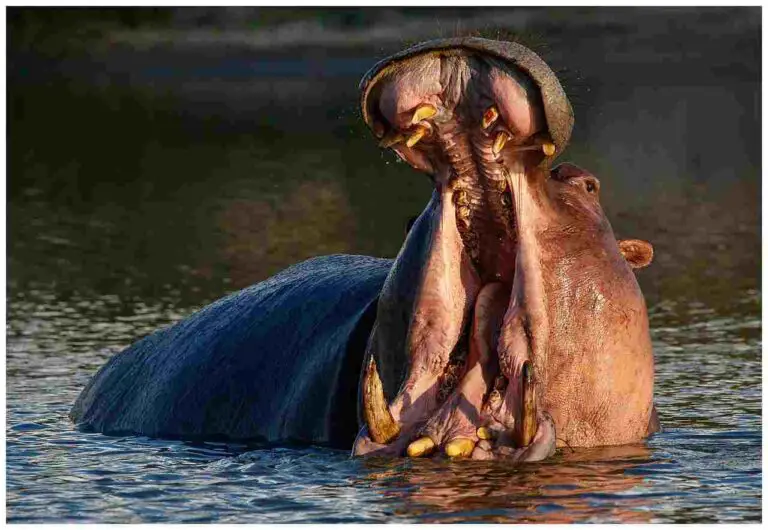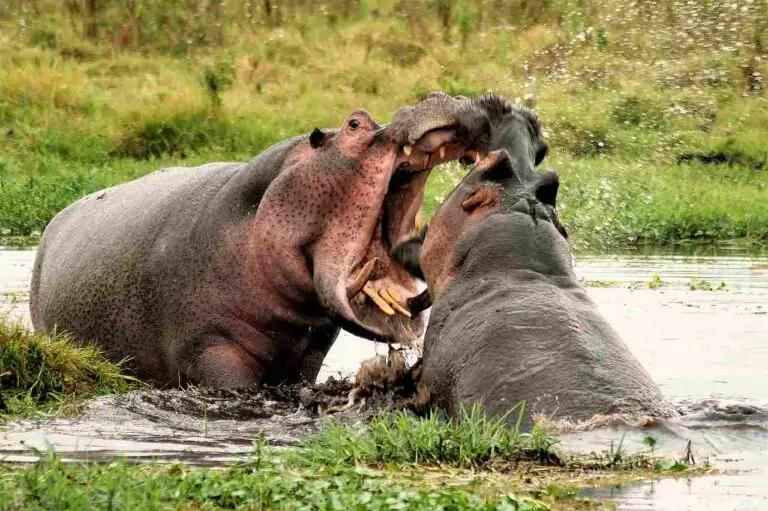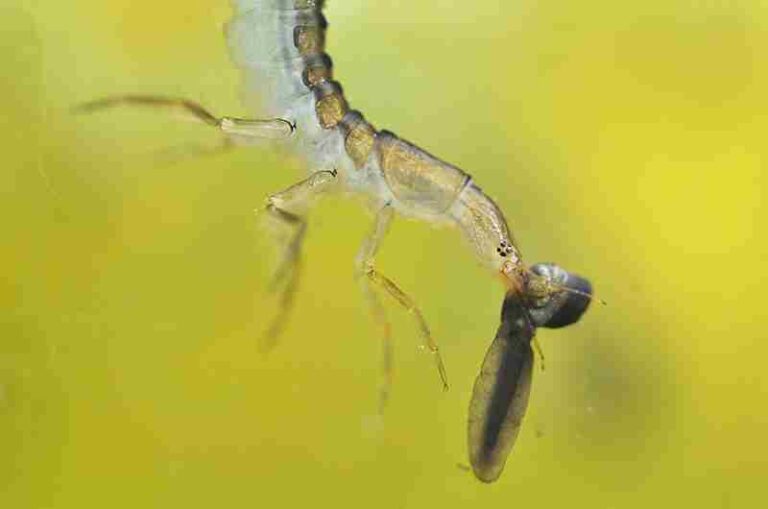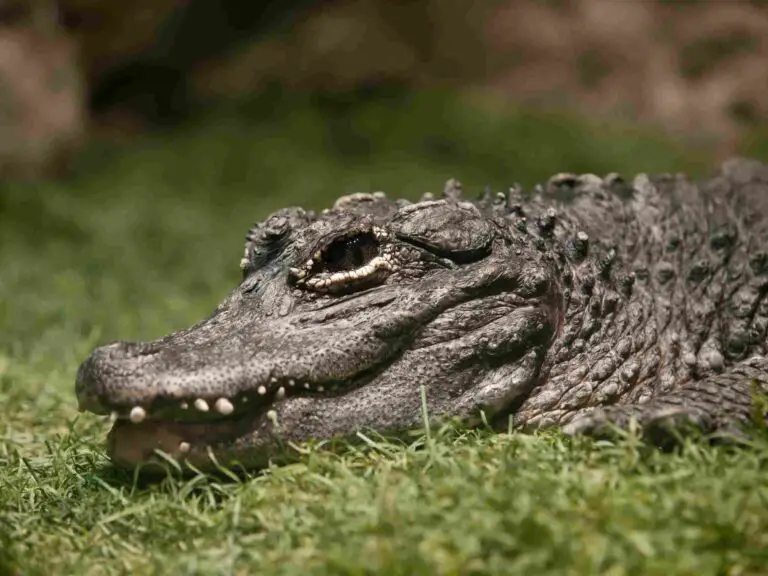Mongoose Vs Ferret Size, Weight, Overall Comparison
A theoretical confrontation between a mongoose and a ferret, two distinct members of the Mustelidae family, provides an interesting exploration of their potential interactions. While mongooses and ferrets belong to the same family, they differ in genus, and their unique characteristics may influence the outcome of a one-on-one encounter. This analysis delves into their size, strength, hide thickness, and aggressiveness to speculate on the likely victor in this hypothetical scenario.
Mongoose vs Ferret: Assessing the Likely Victor in a Confrontation
In a hypothetical scenario involving a mongoose and a ferret, the mongoose is likely to emerge victorious in a fight due to its generally heavier weight, greater strength, thicker hide, and more aggressive nature.
I). Genetic Distinction:
– Although mongooses and ferrets belong to the Mustelidae family, they are not closely related in terms of genus. Mongooses are typically associated with the Herpestidae family, while ferrets fall under the Mustela genus. This genetic distinction highlights their unique evolutionary paths within the broader Mustelidae family.
II). Weight and Strength Advantage:
– Mongooses, generally heavier and possessing greater strength than ferrets, have a significant advantage in terms of size and power. This weight and strength advantage provides the mongoose with the ability to withstand and counter the ferret’s attacks.
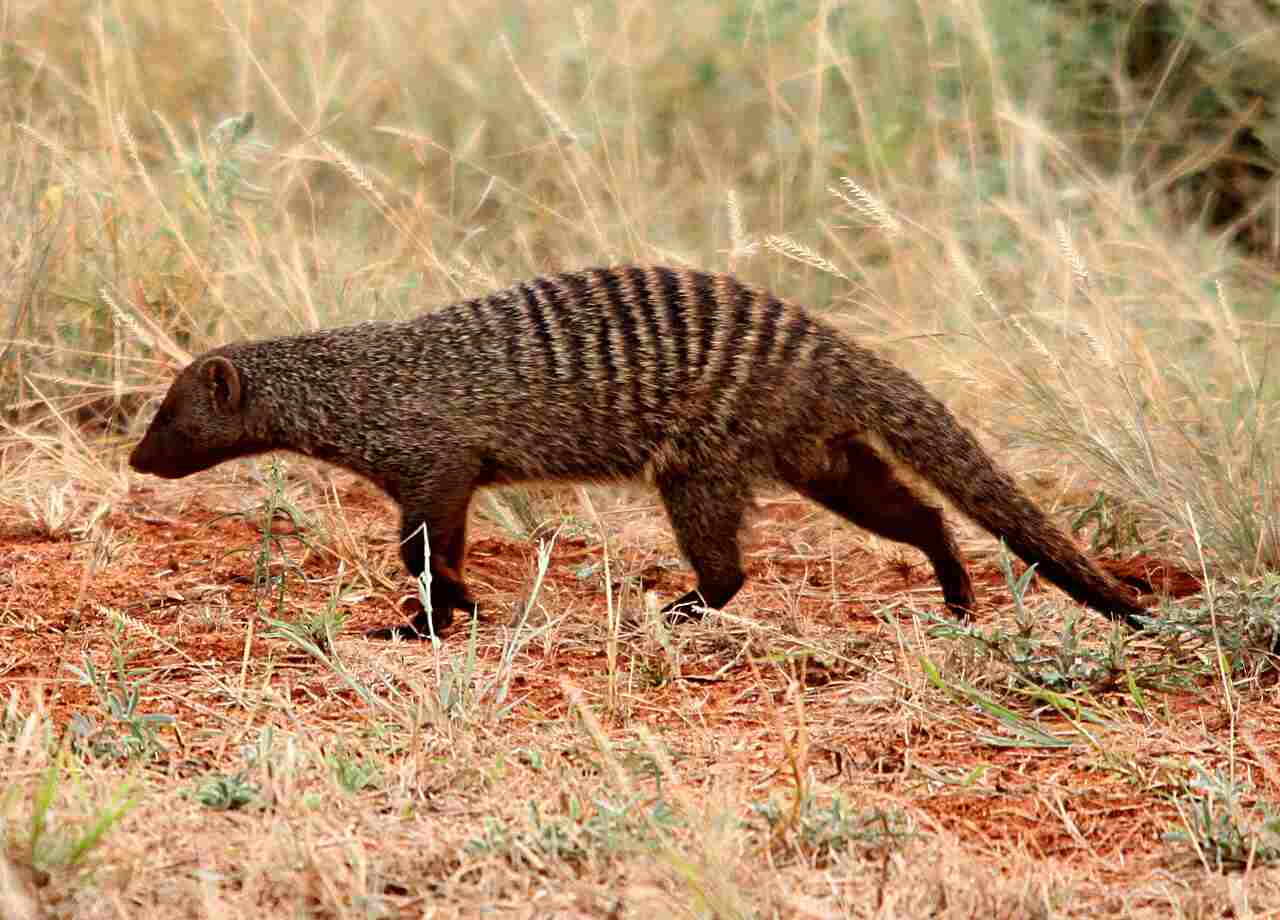
III). Thick Hide:
– Mongooses often have a relatively thick hide, providing an additional layer of protection against the ferret’s bites and scratches. This defensive feature reduces the impact of the ferret’s aggression and enhances the mongoose’s durability in a physical encounter.
IV). More Aggressive Nature:
– Mongooses are known for their aggressiveness, particularly when faced with threats. This aggressive nature can be a decisive factor in a confrontation with a ferret, allowing the mongoose to take control of the encounter and assert dominance.
V). Overall Dynamics:
– In this hypothetical scenario, the mongoose is likely to prevail in a fight against a ferret due to its generally heavier weight, greater strength, thicker hide, and more aggressive nature. While both belong to the Mustelidae family, the mongoose’s unique characteristics give it a decisive advantage in overcoming the ferret’s defenses and securing victory in the confrontation.
*Details of Comparison
| Criteria | Mongoose | Ferret |
| Taxonomy | Herpestidae | Mustelidae |
| Appearance | Slender, varied fur color |
Elongated, distinct coat pattern
|
| Size | Varied | Generally larger |
| Weight | Variable | Generally lighter |
| Bite Force (PSI) | Limited data |
Adapted for carnivorous diet
|
| Physical Offensive Adv. | Sharp claws, teeth | Powerful jaws |
| Physical Defensive Adv. | Agility |
Chemical defenses (domestic ferrets)
|
| Speed | Up to 32 km/h (20 mph) |
Agile, but generally not as fast
|
| Agility | Climbing ability |
Navigates tight spaces effectively
|
| Physical Capacity | Versatile for hunting and survival |
Balanced adaptation for hunting
|
| Habitat Preference(s) | Adaptable, including urban environments |
Prefers grasslands, fields, and burrows
|
| Tracks | Four clawed toes, distinct pad |
Distinctive, may require expert analysis
|
| Lifespan | 6-13 years (wild, species-dependent) |
Shorter lifespan, 6-10 years (captivity)
|
| Mode of Feeding | Carnivorous, diverse prey including snakes |
Strictly carnivorous, targeting mammals
|
| Intelligence | Problem-solving, social intelligence |
Intelligent, trainable, playful (domestic)
|
| Social Behavior | Varied social structures |
Generally solitary (wild), social (domestic)
|
| Mode of Reproduction | Variable reproductive strategies |
Seasonal breeders, give birth to kits
|
| Parental Behavior | Varied parental care, some cooperative |
Female cares for kits (domestic ferrets)
|
| Proximity to Humans | Adaptable to urban areas |
Domestic ferrets as pets, proximity to humans
|
| Behavior Toward Humans | Defensive or avoidant in the wild |
Domestic ferrets often sociable
|
| Danger Posed to Humans | Not highly dangerous under normal circumstances |
Generally not highly dangerous
|
| Associated Precautions | Precautions depend on regional risks |
Basic precautions for responsible ownership
|
| Conservation Status | Varied, some face threats |
Domestic ferrets not endangered; European polecats may face threats
|
| Conclusion | Both carnivores with diverse adaptations, found near humans |
Showcasing diversity within the carnivore order
|
1. Taxonomy:
Family: Herpestidae
Subfamilies: Herpestinae (Old World mongooses), Mungotinae (mongoose-like animals)
Examples: Indian gray mongoose (Herpestes edwardsii), Egyptian mongoose (Herpestes ichneumon)
Ferret:
Family: Mustelidae
Subfamily: Mustelinae
Genus: Mustela
Species: Mustela putorius (European polecat, domestic ferret)
Note: Despite both being carnivores, mongooses and ferrets belong to different families and subfamilies within the order Carnivora.
2. Appearance:
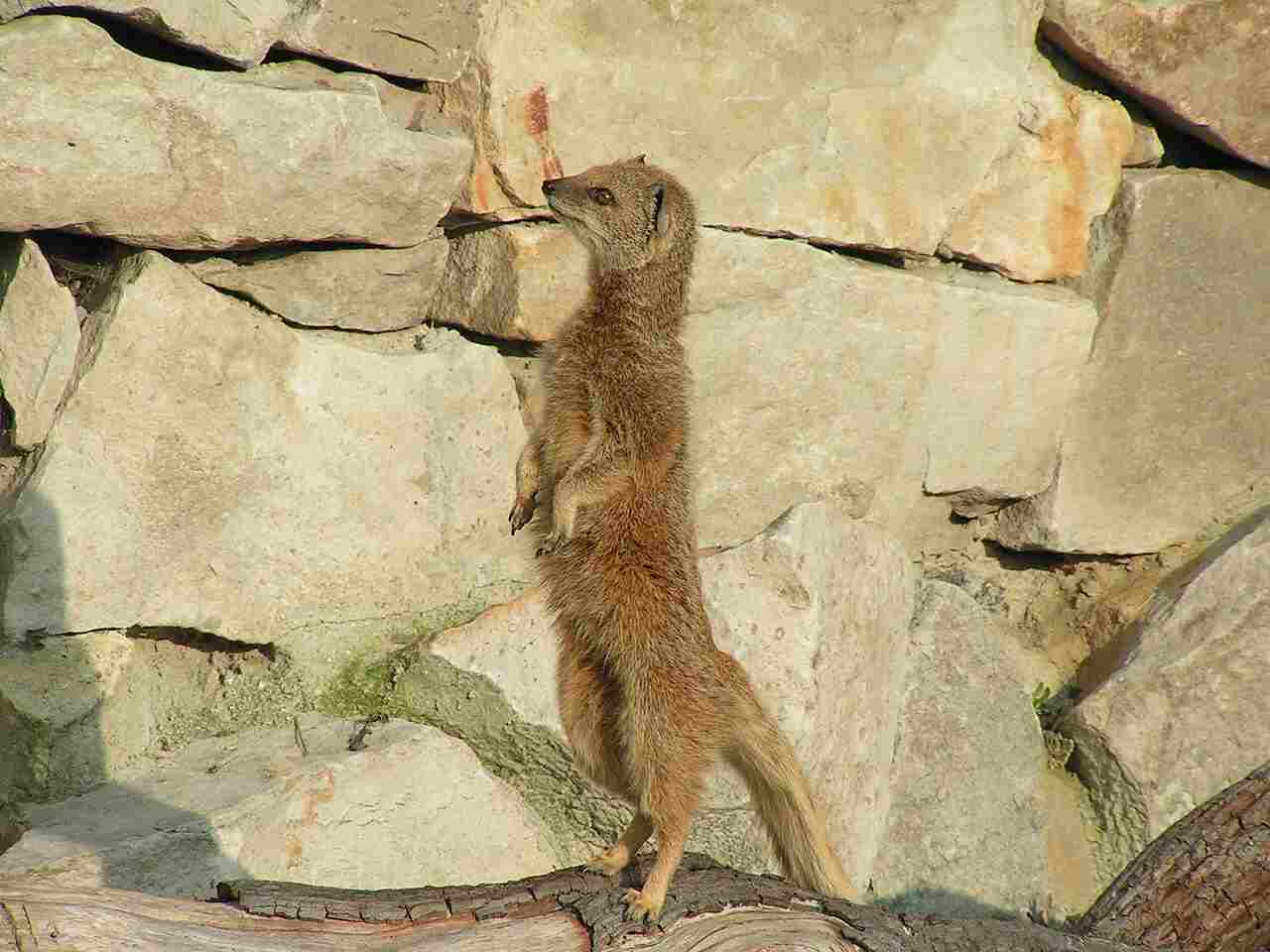
Mongoose:
Slender body with a pointed snout.
Fur color varies; can be brown, gray, or reddish-brown.
Sharp claws for digging and climbing.
Ferret:
Elongated body with a shorter snout.
Typically has a white or light-colored coat with dark markings.
Claws adapted for digging but not as sharp as mongoose claws.
Comparison:
While both share adaptations for digging, mongooses generally have a more varied fur coloration, whereas ferrets commonly display a distinct pattern.
Ecological Implications:
Fur coloration may be linked to habitat camouflage, aiding mongooses in diverse environments. Ferrets, with their specific coat patterns, might have adaptations for their own ecological roles.
3. Size:
Mongoose:
Length ranges from 7 to 25 inches (18-64 cm) excluding tail.
Ferret:
Length typically 20 inches (51 cm) including the tail.
Comparison:
Ferrets are generally larger in overall size compared to mongooses.
Ecological Implications:
Size differences may impact their roles in ecosystems, affecting prey selection, competition, and overall ecological niches.
4. Weight:
Mongoose:
Weights vary widely but generally range from 0.5 to 4 kg.
Ferret:
Adult ferrets usually weigh between 0.7 to 2 kg.
Comparison:
Mongooses can exhibit greater weight variability compared to ferrets.
Ecological Implications:
Weight variations may influence hunting strategies, dietary preferences, and overall ecological impacts within their respective habitats.
5. Bite Force (PSI):
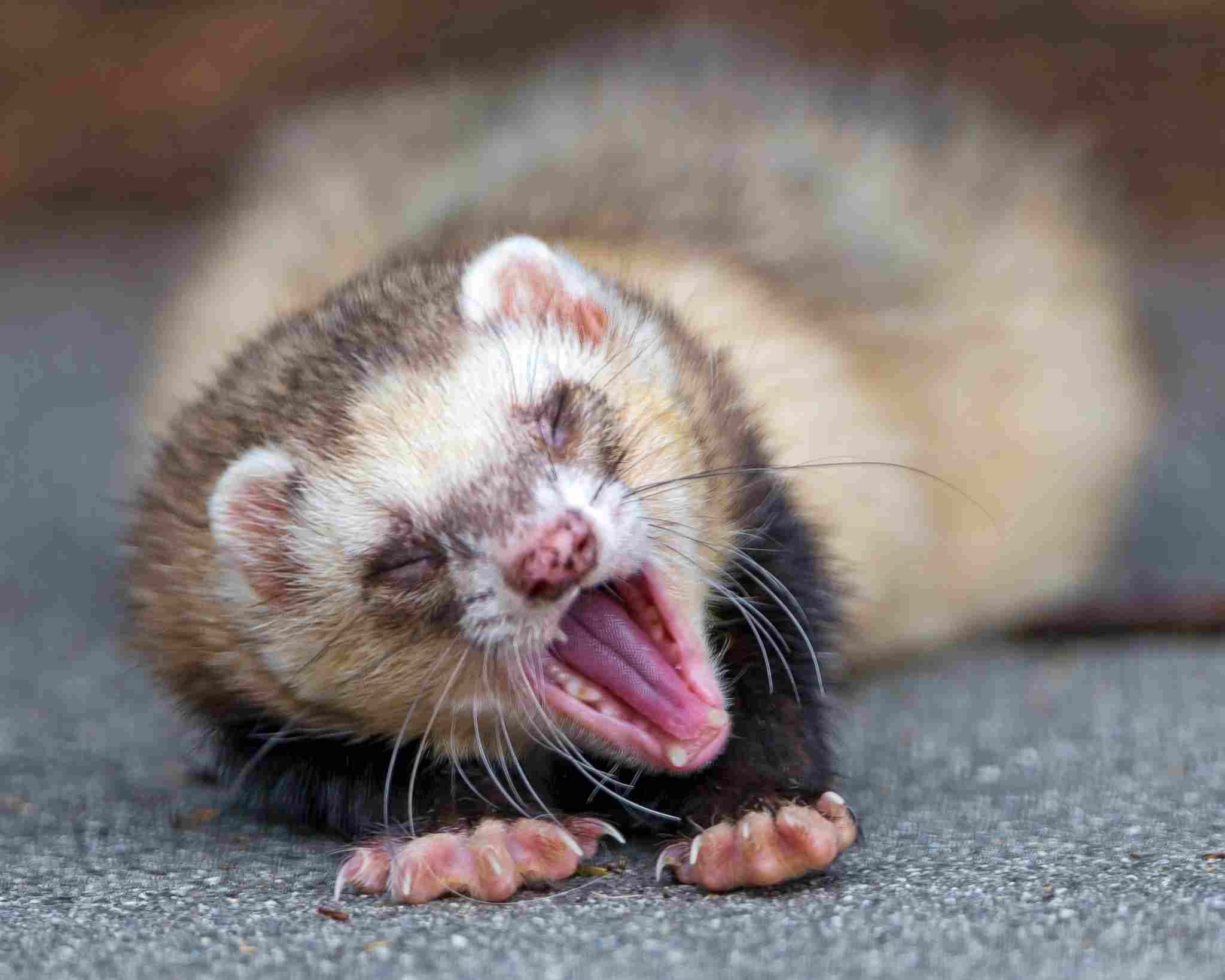
Mongoose:
PSI not well-documented, but adapted for gripping and crushing small prey.
Ferret:
PSI not extensively studied, but adapted for a carnivorous diet.
Comparison:
Specific data on bite force is limited, making direct comparisons challenging.
Ecological Implications:
Bite force adaptations in both species are likely tailored to their prey, influencing the types of animals they can efficiently catch and consume in their ecosystems.
6. Physical Offensive Advantages:
Mongoose:
Sharp claws and teeth for effective prey capture.
Ferret:
Powerful jaw and teeth designed for hunting small mammals.
Comparison:
Both possess specialized adaptations for hunting, with mongooses relying on claws and ferrets on powerful jaws.
Ecological Implications:
These offensive adaptations contribute to their efficiency in hunting and play a crucial role in shaping their interactions within ecosystems.
7. Physical Defensive Advantages:
Mongoose:
Agility and speed for evading predators.
Ferret:
Can emit a strong-smelling secretion for defense (domestic ferrets).
Comparison:
Mongoose relies on agility and speed, while ferrets utilize chemical defenses.
Ecological Implications:
Different defensive strategies may influence their interactions with predators and competitors in their respective habitats.
8. Speed (Km/hour or Mile/hour):
Mongoose:
Capable of reaching speeds up to 32 km/h (20 mph).
Ferret:
Agile but generally not as fast as mongooses.
Comparison:
Mongooses exhibit higher top speeds compared to ferrets.
Ecological Implications:
Speed is crucial for catching prey and evading predators; this difference may impact their hunting efficiency and ability to escape danger.
9. Agility:
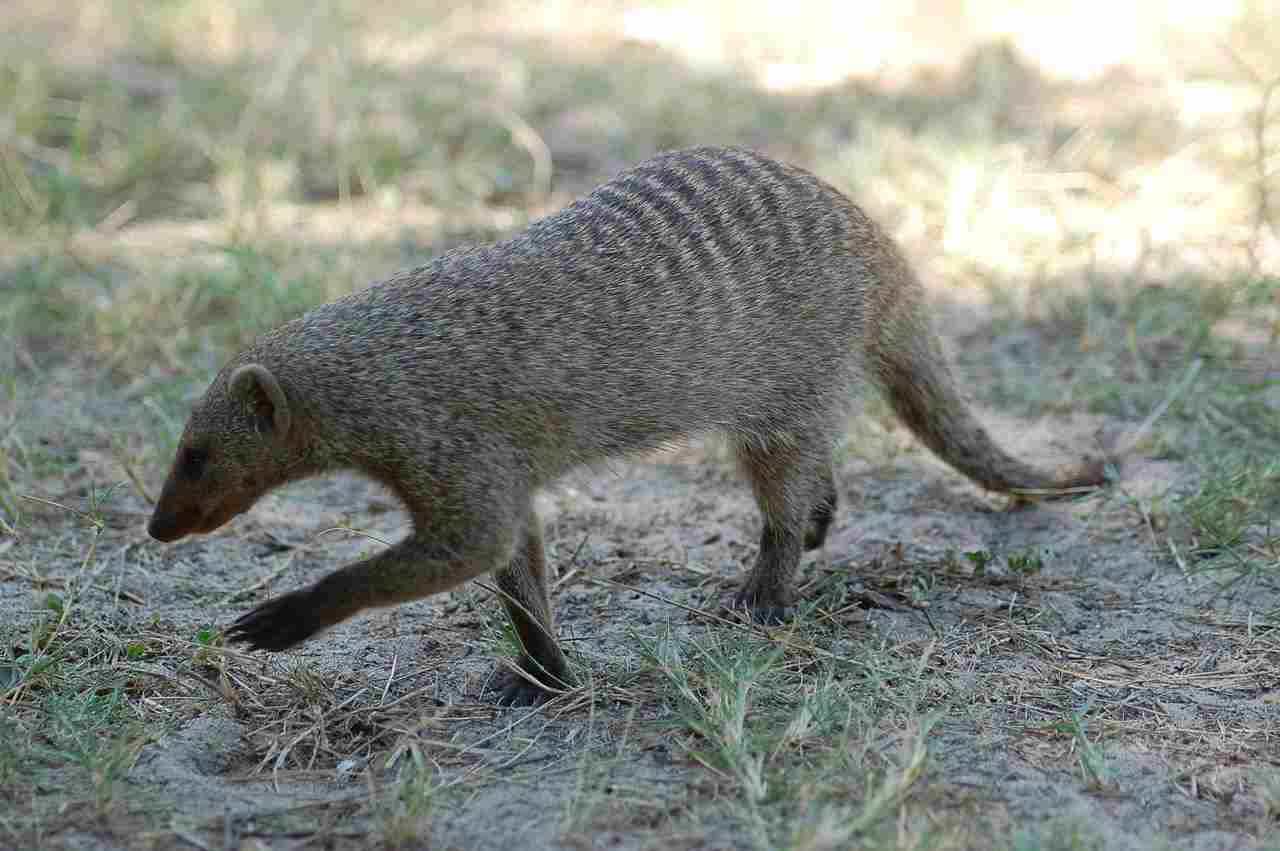
Mongoose:
Highly agile with the ability to climb trees and navigate various terrains.
Ferret:
Agile and flexible, able to squeeze into tight spaces.
Comparison:
Both species showcase agility, but mongooses excel in climbing, while ferrets excel in navigating confined spaces.
Ecological Implications:
Agility adaptations contribute to their ability to access different resources and environments, influencing their ecological roles.
10. Overall Physical Capacity:
Mongoose:
Possesses a combination of speed, agility, sharp claws, and teeth, making it a versatile hunter.
Ferret:
Displays a balance of agility, strength, and a keen sense of smell for effective hunting.
Comparison:
Both species exhibit well-rounded physical capacities, each adapted to their specific ecological niche.
Ecological Implications:
The diverse physical capacities contribute to their effectiveness in hunting and navigating their environments, shaping their roles within ecosystems.
11. Habitat Preference(s):

Mongoose:
Varied habitats including grasslands, forests, and urban areas.
Ferret:
Prefers grasslands, fields, and areas with access to burrows.
Comparison:
While there is some overlap, mongooses are more adaptable to urban environments.
Ecological Implications:
Habitat preferences influence their interactions with other species and their impact on local ecosystems.
12. Tracks:
Mongoose:
Characterized by prints of four clawed toes and a distinct pad.
Ferret:
Similar to mongoose but may show variations depending on the specific species.
Comparison:
Both leave distinctive tracks, but detailed identification may require expert analysis.
Ecological Implications:
Tracking can aid in monitoring population dynamics and understanding their movements within ecosystems.
13. Lifespan:
Mongoose:
Varies by species, typically 6 to 13 years in the wild.
Ferret:
6 to 10 years on average in captivity, shorter in the wild.
Comparison:
Ferrets generally have a shorter lifespan compared to many mongoose species.
Ecological Implications:
Lifespan influences population dynamics, reproductive strategies, and overall ecological contributions of each species.
14. Mode of Feeding:
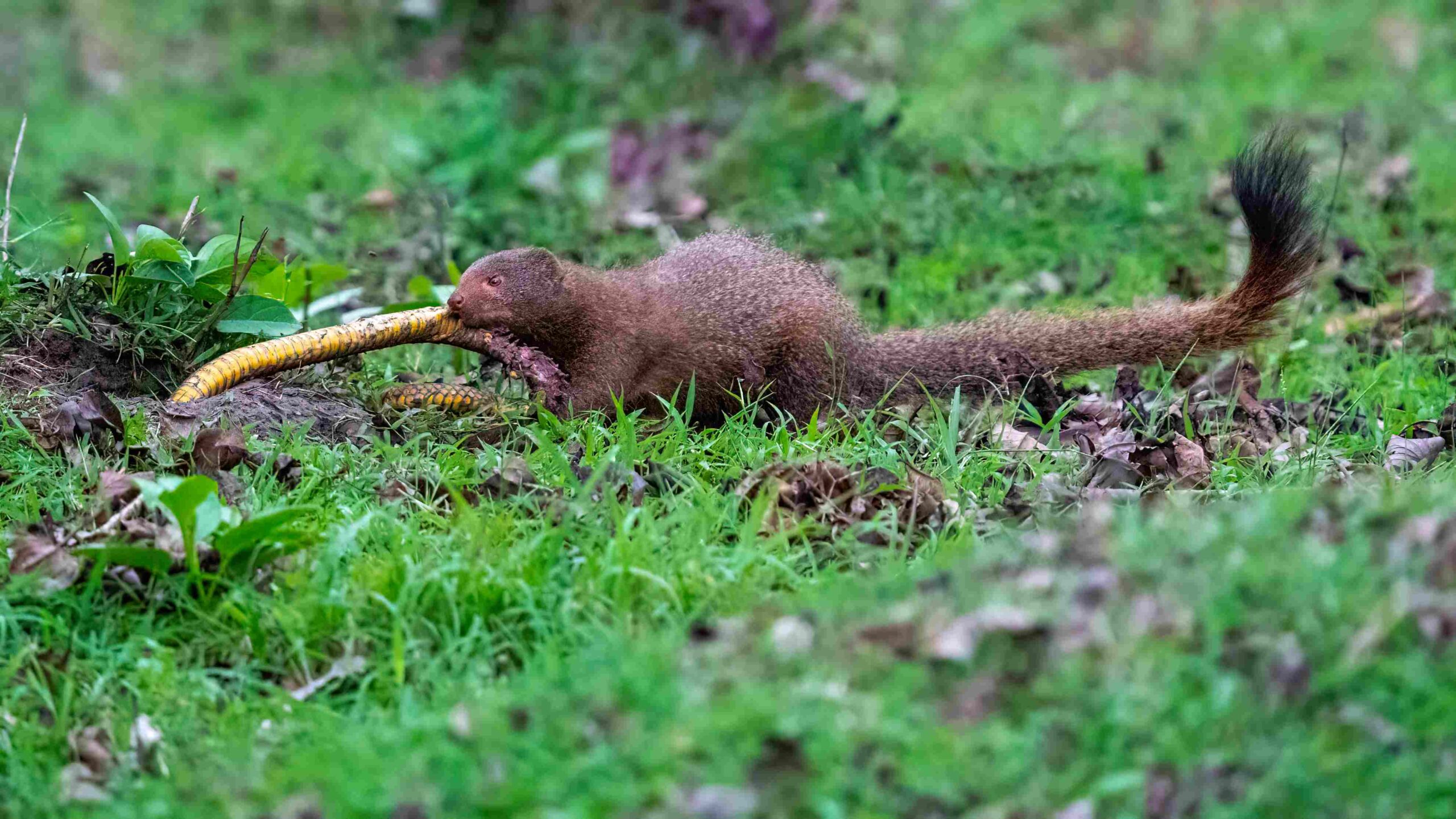
Mongoose:
Carnivorous diet, preying on small mammals, birds, insects, and sometimes snakes.
Ferret:
Strictly carnivorous, primarily targeting small mammals.
Comparison:
Both rely on a meat-based diet, contributing to their role as carnivorous hunters.
Ecological Implications:
Their feeding habits impact local prey populations and contribute to the overall balance of ecosystems.
15. Intelligence:
Mongoose:
Exhibits problem-solving skills and social intelligence; some species are known for cooperative hunting.
Ferret:
Intelligent, curious, and trainable; domestic ferrets are known for playful behaviors.
Comparison:
Both species demonstrate a level of intelligence adapted to their respective environments.
Ecological Implications:
Intelligence plays a role in foraging strategies, adaptability to changing environments, and interactions with other species.
16. Social Behavior:
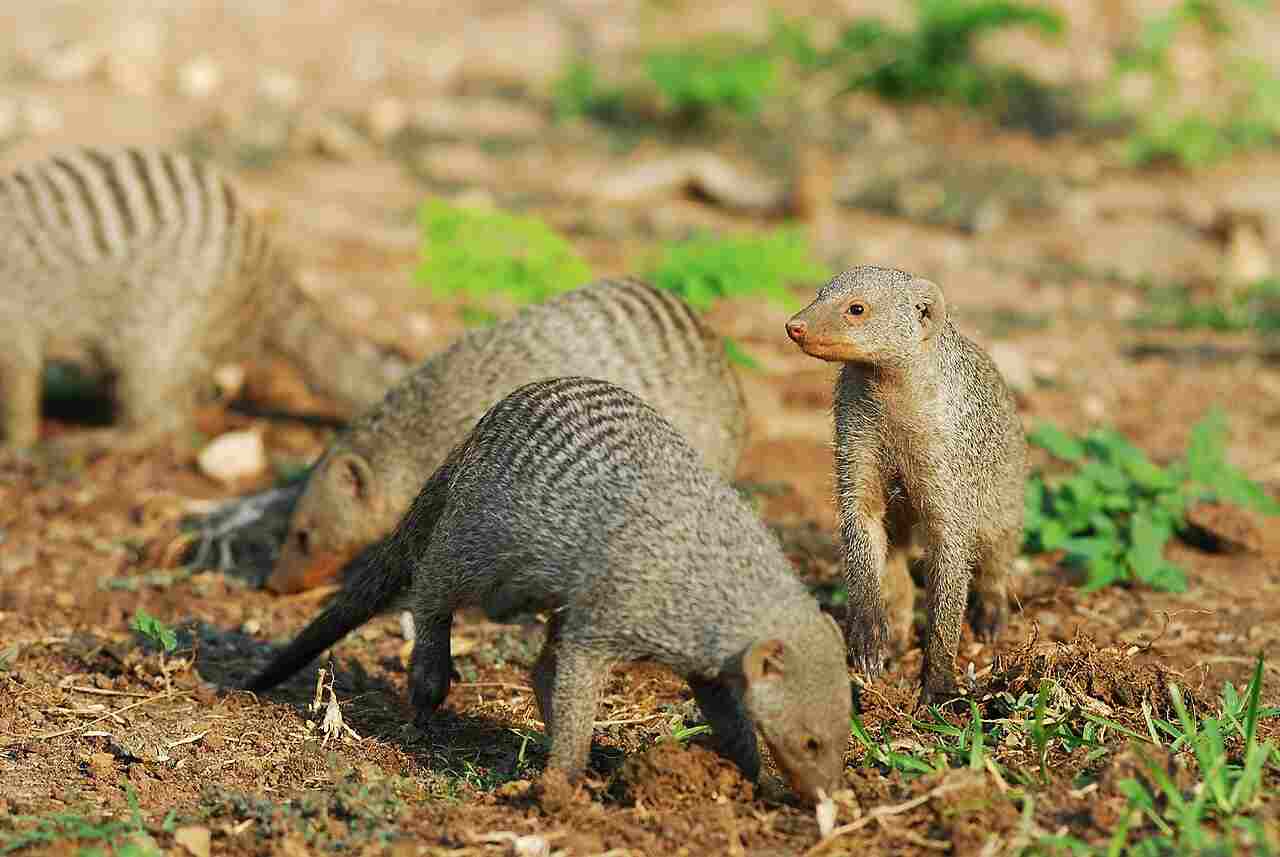
Mongoose:
Varied social structures, ranging from solitary to highly social, depending on the species.
Ferret:
Generally solitary in the wild; domestic ferrets may exhibit social behaviors.
Comparison:
Mongooses have a more diverse range of social structures compared to ferrets.
Ecological Implications:
Social behavior influences group dynamics, communication, and cooperative activities within their ecosystems.
17. Mode of Reproduction:
Mongoose:
Variable reproductive strategies, with some species exhibiting monogamy and cooperative breeding.
Ferret:
Seasonal breeders, typically giving birth to a litter of kits.
Comparison:
Reproductive strategies vary, with mongooses showing a broader range of behaviors.
Ecological Implications:
Reproductive strategies impact population dynamics, competition for resources, and the overall stability of their ecosystems.
18. Parental Behavior:
Mongoose:
Varied parental care, with some species exhibiting cooperative breeding and shared responsibilities.
Ferret:
Female ferrets, or jills, are responsible for raising and caring for the kits.
Comparison:
While both display parental care, mongooses may have a wider range of cooperative behaviors in raising offspring.
Ecological Implications:
Parental behavior influences the survival and development of the young, impacting population dynamics within ecosystems.
19. Proximity to Human-Inhabited Areas:
Mongoose:
Adaptable to urban environments; some species thrive near human settlements.
Ferret:
Domestic ferrets are kept as pets, often living in close proximity to humans.
Comparison:
Both mongoose and ferret species can be found in or near human-inhabited areas.
Ecological Implications:
Proximity to humans can lead to interactions, conflicts, or potential ecological impacts on local fauna.
20. Behavior Toward Humans:
Mongoose:
Wild mongooses may exhibit avoidance or defensive behaviors when encountering humans.
Ferret:
Domestic ferrets are often sociable with humans, while wild ferrets may avoid human contact.
Comparison:
Domestication has influenced the behavior of ferrets towards humans more than wild mongooses.
Ecological Implications:
Interactions with humans can influence their survival strategies, particularly in areas where human activities impact their habitats.
21. Danger Posed to Humans:
Mongoose:
Generally not considered dangerous to humans, but may bite if threatened.
Ferret:
Domestic ferrets pose minimal danger; wild ferrets are typically more cautious around humans.
Comparison:
Both species are not considered highly dangerous to humans under normal circumstances.
Ecological Implications:
Understanding the potential risks helps manage coexistence and mitigate any negative impacts on both human and animal populations.
22. Associated Precautions:
Mongoose:
Caution should be exercised in regions where mongooses carry diseases or may pose a threat if cornered.
Ferret:
Basic precautions, such as vaccinations and responsible ownership, are recommended for domestic ferrets.
Comparison:
While both require responsible handling, precautions differ based on their potential risks to humans.
Ecological Implications:
Understanding and taking precautions can minimize potential negative impacts on both human and animal populations.
23. Conservation Status:
Mongoose:
Conservation status varies by species; some are listed as least concern, while others face threats due to habitat loss and invasive species competition.
Ferret:
Domestic ferrets are not considered endangered, but wild European polecats, the ancestors of ferrets, may face threats in some regions.
Comparison:
Conservation statuses differ based on the specific species and their unique ecological challenges.
Ecological Implications:
Conservation efforts aim to preserve biodiversity and maintain ecological balance within their respective habitats.
Comparison Summary:
Taxonomy:
Mongoose belongs to the family Herpestidae, while ferret is in the family Mustelidae, demonstrating distinct evolutionary lineages.
Appearance:
Mongooses have a slender body with varied fur color, while ferrets have an elongated body with a specific coat pattern.
Size:
Ferrets are generally larger than mongooses.
Weight:
Mongooses exhibit greater weight variability than ferrets.
Bite Force (PSI):
Limited data, but both adapted for carnivorous diets.
Physical Offensive Advantages:
Mongooses rely on sharp claws, while ferrets use powerful jaws.
Physical Defensive Advantages:
Mongooses depend on agility, while ferrets use chemical defenses.
Speed:
Mongooses can reach higher speeds compared to ferrets.
Agility:
Mongooses excel in climbing, while ferrets navigate tight spaces effectively.
Overall Physical Capacity:
Both exhibit versatile physical capacities adapted to their respective environments.
Habitat Preference(s):
Mongooses are more adaptable to urban environments.
Tracks:
Both leave distinctive tracks, with detailed identification requiring expert analysis.
Lifespan:
Ferrets generally have a shorter lifespan compared to many mongoose species.
Mode of Feeding:
Both rely on a meat-based diet, impacting local prey populations.
Intelligence:
Both species demonstrate a level of intelligence adapted to their environments.
Social Behavior:
Mongooses have a more diverse range of social structures compared to ferrets.
Mode of Reproduction:
Reproductive strategies vary, with mongooses showing a broader range of behaviors.
Parental Behavior:
Mongooses may exhibit a wider range of cooperative behaviors in raising offspring.
Proximity to Human-Inhabited Areas:
Both mongoose and ferret species can be found in or near human-inhabited areas.
Behavior Toward Humans:
Domestication has influenced the behavior of ferrets towards humans more than wild mongooses.
Danger Posed to Humans:
Both species are not considered highly dangerous to humans under normal circumstances.
Associated Precautions:
Precautions differ based on potential risks to humans.
Conservation Status:
Conservation statuses differ by species, addressing unique ecological challenges.
Conclusion
I) Similarities:
Both mongoose and ferret exhibit carnivorous diets, possess adaptations for hunting, and can be found in or near human-inhabited areas.
II) Differences:
Differences include their taxonomy, size, defensive strategies, social behaviors, and ecological roles, showcasing the diversity within the carnivore order and the specific adaptations each species has evolved.
